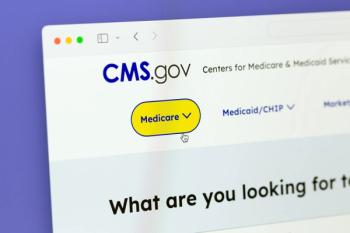
Most Medicare Beneficiaries Find Plan Shopping Confusing Ahead of 2026 Annual Enrollment Period
Key Takeaways
- Many Medicare beneficiaries find the AEP confusing, with significant plan changes expected in 2026. Awareness of these changes is low.
- Only 51% of beneficiaries plan to review their coverage options this AEP, down from 63% last year, highlighting a need for increased awareness.
Medicare beneficiaries face confusion during the Annual Enrollment Period, with significant plan changes ahead for 2026. Understanding options is crucial.
Most Medicare beneficiaries claim shopping for a plan during the upcoming Annual Enrollment Period (AEP) is confusing, with many unaware of significant plan changes coming in 2026.
According to a
It was also found that 36% of Medicare Advantage and Part D plan enrollees reported being unaware of major cost and benefit changes expected next year.
“This is not the year for Medicare beneficiaries to go on autopilot, as significant changes are expected for Medicare Advantage, Medicare Supplement, and Part D plans,” Derrick Duke, CEO of eHealth, said in the report’s announcement. “As this survey shows, many Medicare beneficiaries find the process of comparing their options to be confusing, especially this year with so many health insurers making changes to supplemental benefits and eliminating some plans entirely. Comparing plans is crucial because it can help Medicare beneficiaries save on out-of-pocket expenses and retain access to quality care.”
Other survey findings revealed gaps in knowledge about Medicare plans.
For example, about one-third of respondents said they don’t fully understand how Medicare Advantage, Medicare Supplement and Part D plans differ, while 33% incorrectly believe Medicare covers GLP-1 drugs for weight loss. Nearly 29% were unaware that Medicare covers recommended vaccines with no out-of-pocket costs.
Whitney Stidom, vice president of consumer enablement at eHealth, noted that Medicare beneficiaries are facing a “confusing Annual Enrollment Period this fall,” given the plan and benefit changes coming for 2026. She added that shopping around for potential plans can help beneficiaries find options that better suit their health needs and financial goals.
“In fact, comparing plans can enable Medicare Advantage beneficiaries to potentially save $1,800+ per year in out-of-pocket expenses while retaining access to quality care,” she added.
The survey also examined awareness of Annual Notice of Change (ANOC) letters, which insurers send to outline plan adjustments.
It was found that only 47% of enrollees said they had received their ANOC letter, while 24% said they don’t recall ever receiving one. Stidom noted these letters are essential for understanding changes to premiums, deductibles, copays, coverage of drugs and provider networks. She advised beneficiaries who haven’t received or misplaced their letter to contact their insurer for a copy or summary of plan changes for 2026.
In addition, beneficiaries are encouraged to review three key areas in their ANOC letters:
- Changes to coverage: Look for adjustments to prescription drugs or supplemental benefits, including drugs moved to higher tiers, prior authorization requirements or removals from coverage.
- Changes to costs: Pay attention to monthly premiums, deductibles, copays, coinsurance and annual out-of-pocket maximums. Changes in specialist visit fees, diagnostic tests or equipment coverage can significantly impact total healthcare spending.
- Changes to provider networks: Medicare Advantage plans rely on private insurer networks, which can change year to year. Beneficiaries are encouraged to check whether their preferred doctors, hospitals and pharmacies remain in-network to avoid higher costs.
The survey also found growing interest in using technology to simplify plan selection.
About 50% of Medicare beneficiaries said they would consider working with an AI agent by phone to get more efficient assistance. At the same time, 25% of beneficiaries with diabetes reported being unaware of Chronic Special Needs Plans (C-SNPs), which target individuals with chronic conditions. Among beneficiaries interested in GLP-1 drugs for weight loss, 21% shared they would be willing to pay $500 or more per month if Medicare covered the medication.
Even with these gaps in knowledge and interest in new tools or treatments, beneficiaries can be reassured that Medicare services will continue as usual despite the current government shutdown.
According to the U.S. Department of Health and
With millions of Americans preparing to make coverage decisions during this year’s AEP, which runs from Oct. 15 through Dec. 7, the survey highlights the importance of carefully reviewing options and understanding plan changes.
Newsletter
Get the latest industry news, event updates, and more from Managed healthcare Executive.





















































